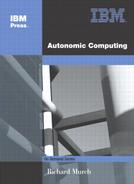Moore's Law
The IT industry has its own measure of speed. For more than three decades, it has been an unshakable principle of the computer industry that every 18 months, the number of transistors that will fit on a silicon chip doubles.
The phenomenon known as Moore's Law, named for the semiconductor pioneer who first observed it, has been the basic force underlying the computer revolution and the rise of the Internet. Moore made his prediction in 1965 for an article he was writing for a magazine.[1] Later, he had to revise his initial prediction of 24 months for each doubling of chip capacity. And while it is not an actual physical law, his observation has taken on an almost mystical quality as the clearest expression of the power of human science and engineering. In fact, many industry executives have come to see it as a self-fulfilling prophecy. As transistors have been scaled ever smaller, computing performance has risen exponentially, while the cost of that power has been driven down. And it has been assumed in the industry that the rate of progress would hold for at least another 10 to 15 years despite recent debates to the contrary.
Table 5.2 lists the trend is the number of transistors on a chip over time.
| Processor Type | Year of Introduction | Transistors |
|---|---|---|
| 4004 | 1971 | 2,250 |
| 8008 | 1972 | 2,500 |
| 8080 | 1974 | 5,000 |
| 8086 | 1978 | 29,000 |
| 286 | 1982 | 120,000 |
| 386™ processor | 1985 | 275,000 |
| 486™ DX processor | 1989 | 1,180,000 |
| Pentium® processor | 1993 | 3,100,000 |
| Pentium II processor | 1997 | 7,500,000 |
| Pentium III processor | 1999 | 24,000,000 |
| Pentium 4 processor | 2000 | 42,000,000 |
| Source: Intel Corporation | ||
Figure 5.1 illustrates the point.
Figure 5.1. The graphical representation of Moore's Law. Note that the vertical Y scale is logarithmic—that is, 10 times the previous scale.

To be sure, such dire warnings have been made periodically in the past—an article in Scientific American in 1987 said Moore's Law was unlikely to be maintained through the 1990s—and each time semiconductor designers have shown remarkable ingenuity in surmounting seemingly impossible barriers. This means those computer speeds will continue to increase. If Moore's Law had operated in the automobile industry, it would be possible to purchase a Jaguar S-Type for less than $5 and have it run on gasoline for over 200 miles to the gallon. While this is perhaps a crude analogy and calculation, the conclusion is inescapable. It's all about high speed and low cost.
